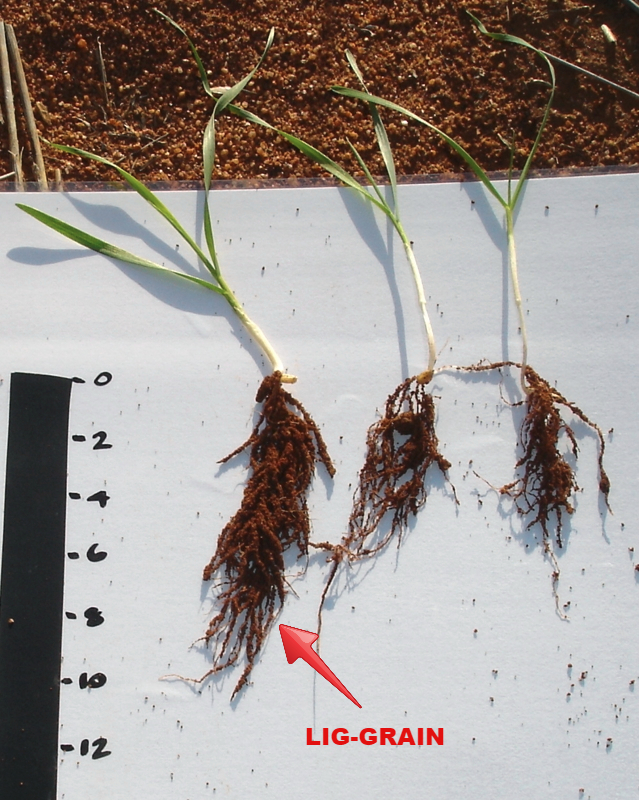Nutrient Seed Dressings
Nutrient seed dressings should be a high priority for broadacre farmers as they are the most efficient and cost effective method of supplying essential trace elements like zinc & manganese to the crop. For less than $1 an acre, growers can treat their seed and expect a minimum 5% increase in grain yields in most seasons where an average crop is harvested. A recent study found that Australian wheat had the lowest zinc levels of all the major wheat producing countries and this has significant implications for both animal and human health. It also means that the seed you are planting is already low in zinc and this has potential to limit early development and yields.
Zinc seed dressings are the most commonly used due to the universal nature of zinc deficiency across most soil types in Australia and the importance of zinc for early crop development. Zinc is required for the synthesis of the growth hormone auxin which promotes root and top development. Seed dressings are also a very efficient way to supply available zinc at this early stage as zinc is immobile in the soil and availability of zinc applied with base or planting fertilizers is often limited due to precipitation in alkaline or high pH soil conditions.
Other nutrients that can aid germination and early development are manganese, copper (at low levels as it can be toxic), molybdenum & phosphorous. In legume and canola crops boron can also enhance early growth & establishment. One advantage is that many of these formulations are compatible with seed pickles (eg. bunticides, smuticides) so a separate dressing operation is usually not required. Some are also possibly compatible with legume innoculants however those containing copper may be toxic to rhizobium so care needs to be taken.
Aside from yield benefits, seed dressings usually have quite positive effects on root development and germination. Farmers often report that treated seed will emerge 2-5 days before untreated, while the image below shows the significant increase in early root development due to nutrient seed treatment (left). Obviously increased root growth is a major advantage for a plant in terms of water and nutrient availability and this tends to reduce plant stress and enhance crop tolerance to disease & pest attack. The independent scientific trials we have commissioned in NSW, VIC, SA & WA have shown grain yield increases of up 18%.
A question we are often asked is, “Do I still need to apply a zinc foliar spray if I use a seed dressing?”. There is no single answer to this question and much will depend on your soil type and yield potential. Generally we find that there is still a yield benefit with foliar sprays on deficient soils like those in SA and the Victorian Mallee and seed quality (eg. protein levels) is also enhanced. In many areas there will be a need to apply a foliar spray of manganese (eg. SA) or copper (WA) anyway as these nutrients cannot be fully supplied as a seed dressing so most growers will also top up with zinc as well. Leaf tests at 3-5 leaf stage should give you a good idea of zinc status and if extra foliar zinc is required.
SJB has several seed dressing products to suit any crop or soil type.


Leave a Reply
Want to join the discussion?Feel free to contribute!